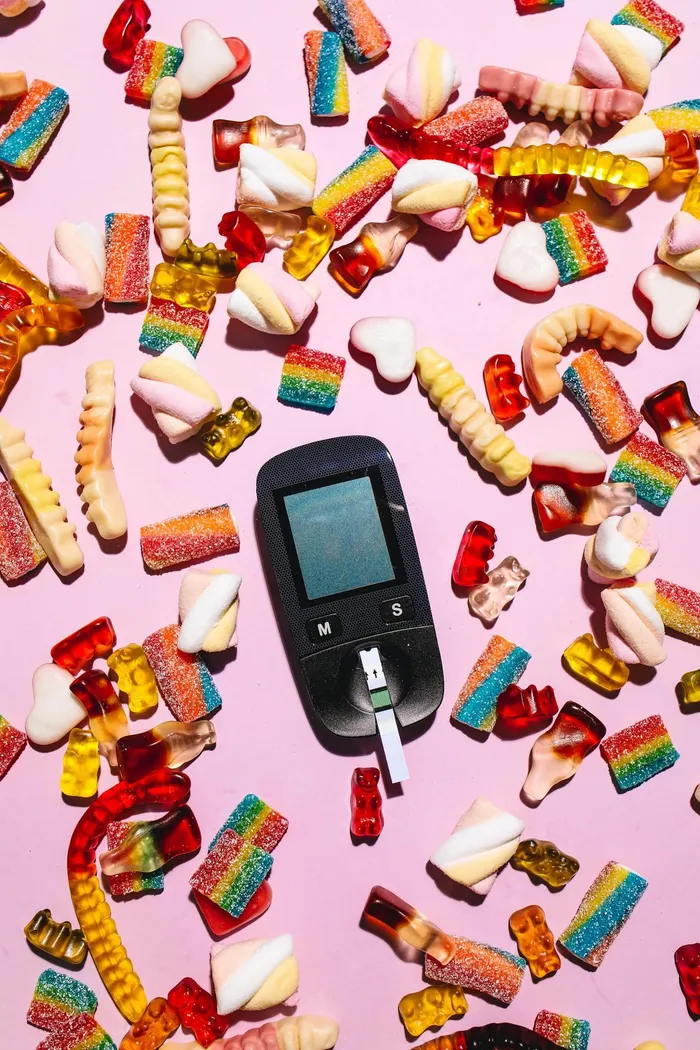Scientists map tongue’s sweet sensor, paving the way to curb sugar cravings
HEALTH

Our love for sugar isn’t just about taste, it's also about biology. When sugar hits the sweet receptor, it activates the brain’s reward system, releasing dopamine, a feel-good chemical.
Image: Polina/Pexels
Have you ever wondered why sugar tastes so irresistible?
Whether it's a slice of malva pudding or a spoonful of rooibos-infused honey, sweet foods have an uncanny ability to make us crave more.
Researchers have been fascinated by this phenomenon for years, and now, a groundbreaking discovery might explain why sugar has such a strong hold on our taste buds and our brains.
For the first time, scientists have uncovered the structure of the sweet receptor, the tiny protein on our tongue responsible for detecting sweetness.
This discovery, published in the Cell Journal on Wednesday, May 7, could revolutionise how we consume sugar, potentially reducing our intake without sacrificing taste.
But what does this mean for us here in South Africa, where sugar is such a big part of our diet and culture?
Let’s dive into the science and the implications.
How do we taste sweetness?
To understand why sugar tastes so good, we need to look at how our taste buds work.
Our tongues are covered in taste buds, which detect five primary flavours: sweet, salty, sour, bitter, and umami (savoury).
These taste signals are sent to the brain, where they are interpreted and linked to emotions, memories, and cravings.
The sweet receptor, officially called T1R2/T1R3, is the key player in detecting sugar.
When sugar molecules land on this receptor, they trigger a signal to the brain, creating that pleasurable “sweet” sensation.
This process is not just about enjoyment, it’s also deeply tied to survival.
Sweet foods are often high in calories, which historically helped humans survive when food was scarce.

The sweet receptor breakthrough offers hope in the fight against sugar-related health issues.
Image: Olena Bohovyk/Pexels
Led by Charles Zuker at the Howard Hughes Medical Institute and Columbia University, researchers have now mapped out the exact structure of the sweet receptor.
This is a big deal because, until now, scientists knew the receptor’s genetic blueprint but didn’t understand how it worked on a molecular level.
Zhang Juen, one of the study’s co-authors, explained to US News & World Report, “By uncovering the structure of the sweet receptor, we gain insight into the molecular mechanisms that govern how we detect sweetness, and how a single receptor can recognise such a broad range of sweet-tasting molecules.”
This discovery could pave the way for new approaches to reducing sugar consumption.
Instead of relying on artificial sweeteners, food companies could design ingredients that enhance the sweet receptor's response to natural sugar.
The result? Foods that taste just as sweet but contain far fewer calories.
Why do we crave sugar so much?
Our love for sugar isn’t just about taste, it's also about biology.
When sugar hits the sweet receptor, it activates the brain’s reward system, releasing dopamine, a feel-good chemical.
This creates a cycle of craving and reward, which explains why sugary foods can be so addictive.
We live in a country where sugar is deeply embedded in our culture.
From koeksisters to lolly pops, sweet treats are a staple at family gatherings, celebrations, and even everyday meals.
But this cultural love for sugar comes at a cost. SA is facing a growing health crisis linked to sugar consumption.
According to a 2022 report by the World Health Organisation (WHO), almost 68% of South African women and 31% of men are overweight or obese.
This is partly due to high sugar intake, which contributes to conditions like diabetes, heart disease, and tooth decay.
In response, the South African government introduced the Health Promotion Levy in 2018, commonly known as the “sugar tax".
This tax on sugary beverages aims to reduce sugar consumption and encourage healthier lifestyles.
While the levy has shown promising results, with a reported 29% reduction in sugary drink purchases, the battle against sugar addiction is far from over.
What does this discovery mean for the future?
The sweet receptor breakthrough offers hope in the fight against sugar-related health issues.
If food manufacturers can use this research to make foods taste sweet with less sugar, it could significantly reduce calorie intake while still satisfying our cravings.
Juen highlighted the potential impact: “This discovery will greatly benefit the battle against our strong desire for sugar and enable the design of sweet receptor modulators, which may help alleviate obesity, diabetes, and cardiovascular disease.”
Sugar is a double-edged sword. On one hand, it brings joy and comfort; on the other, it poses serious health risks when consumed excessively.
The discovery of the sweet receptor’s structure offers exciting possibilities for creating healthier foods, but it’s up to us as individuals to make mindful choices about what we eat.
Related Topics:
